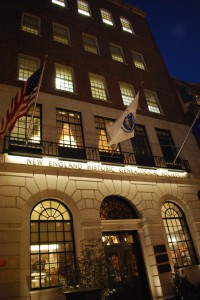 Genealogy, like the study of history in general, aims not only to identify the names of a particular individual’s ancestors, but also to reconstruct the details of that ancestor’s life. Driven by natural curiosity and a desire to connect with those of the past, genealogists and family history researchers strive—as best as they can—to understand who a person was and what he or she did. To accomplish this, a number of sources are typically consulted, including obituaries, biographical reviews, town histories, family letters, and (un)published genealogies. Another important method for obtaining information on the lives of our ancestors—and perhaps the most enjoyable one—is interviewing or asking family members about their family history. Continue reading Making time to talk
Genealogy, like the study of history in general, aims not only to identify the names of a particular individual’s ancestors, but also to reconstruct the details of that ancestor’s life. Driven by natural curiosity and a desire to connect with those of the past, genealogists and family history researchers strive—as best as they can—to understand who a person was and what he or she did. To accomplish this, a number of sources are typically consulted, including obituaries, biographical reviews, town histories, family letters, and (un)published genealogies. Another important method for obtaining information on the lives of our ancestors—and perhaps the most enjoyable one—is interviewing or asking family members about their family history. Continue reading Making time to talk
Research in organizational records
 One of my recent research cases involved searching for information within societies and organizations. It began with searching in newspapers for an 1849 obituary in order to gather more biographical information about my research subject, but I also looked for any references to him in articles and classifieds ads. I first located his death notice, and learned that he was a printer – a compositor of the Boston Transcript. Continue reading Research in organizational records
One of my recent research cases involved searching for information within societies and organizations. It began with searching in newspapers for an 1849 obituary in order to gather more biographical information about my research subject, but I also looked for any references to him in articles and classifieds ads. I first located his death notice, and learned that he was a printer – a compositor of the Boston Transcript. Continue reading Research in organizational records
Deeds: Part Three
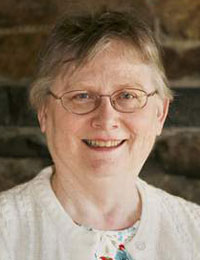 Following up on my previous post, Jerry Anderson reminds me that some colonies did not require a wife to sign a deed releasing her dower rights. This just emphasizes the complexity of the subject of land records and the fact that you will need to learn all the ins and outs that apply to the records you are searching – not exciting stuff, but necessary. I am not up to speed on current genealogy how-to publications, so perhaps readers can chime in here. The old classic I used was Val D. Greenwood’s The Researcher’s Guide to American Genealogy. I just looked it up online and it is still available – a copy in “acceptable” condition can be bought for $1.99 at www.barnesandnoble.com! If you happen to find a copy in your library, check it out. Of course, it will be out of date regarding technology, but basic research information never changes. Continue reading Deeds: Part Three
Following up on my previous post, Jerry Anderson reminds me that some colonies did not require a wife to sign a deed releasing her dower rights. This just emphasizes the complexity of the subject of land records and the fact that you will need to learn all the ins and outs that apply to the records you are searching – not exciting stuff, but necessary. I am not up to speed on current genealogy how-to publications, so perhaps readers can chime in here. The old classic I used was Val D. Greenwood’s The Researcher’s Guide to American Genealogy. I just looked it up online and it is still available – a copy in “acceptable” condition can be bought for $1.99 at www.barnesandnoble.com! If you happen to find a copy in your library, check it out. Of course, it will be out of date regarding technology, but basic research information never changes. Continue reading Deeds: Part Three
Poor relief records

Vita Brevis readers are likely all too familiar with the problem of brick walls in genealogical research. Many are aware of the uses of probate and estate records, but what if your ancestors are not to be found in the probate records of the area where they died? There can be any number of reasons, for economic conditions in the colonial and early Federal period were often unstable, and a family could find itself experiencing periods of both comfort and destitution at one point or another. Fortunately, there are a number of techniques to track less wealthy ancestors, both in the interest of making family connections and learning something of the reality of their lives. Continue reading Poor relief records
Centenarians in the family
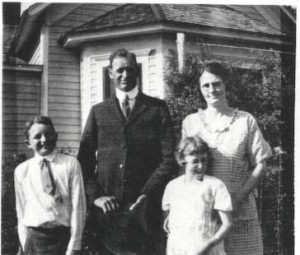
Today marks the one-hundredth birthday of my great-aunt Maxine Smith of Newton, Kansas. My mother flew out yesterday to celebrate this occasion with her siblings. Maxine was one of the older relatives of mine who was very encouraging to my genealogical pursuits in my youth.
As some readers may know, I began doing genealogy in my preteens with some encouragement from my father and his sister. I was soon encouraged to contact older relatives (i.e. relatives of my grandparents’ generation). Continue reading Centenarians in the family
Quality control
Editor’s Note: This is part three of a series on digitizing our special collections. The previous posts can be read here and here.
 Good news! The next phase of our digitization project is under way. We’ve just received the first batch of images from our scanning partner, which means we can begin work on the next step: quality control.
Good news! The next phase of our digitization project is under way. We’ve just received the first batch of images from our scanning partner, which means we can begin work on the next step: quality control.
In the last post, I talked about the organizational aspects of digitization – sorting and physically preparing the items, creating a finding aid, and adding instructions when needed to make sure all the documents are scanned correctly. One of the first things we did upon getting the Howard family papers back from our scanning partner was to make sure that the organization was honored and that all of the pages were scanned. Continue reading Quality control
Saturday’s Fireside Chat
 On Saturday I had the honor and fun of joining with Bob Anderson and Chris Child in a Fireside Chat in the Treat Rotunda at NEHGS. We were each touting publications for sale – Bob’s Great Migration Directory (so popular it has sold out and there were none to physically sell that day!); Chris Child’s first issue of Mayflower Descendant under the new banner of NEHGS, which will be available in January; and Volume 1 of my Early New England Families series. The “Chats,” which took place in three sessions throughout the day, included interesting questions from our moderators, Jim Power and Penny Stratton, and from the audience about our projects, how we all got started in genealogy, and how we work. There were at least 150 people who came for the special day of discount prices in the bookstore, access to the library, and to hear stories from two old genealogists (Bob and I), many of which predated Chris’ birth. I think everyone enjoyed the event. Continue reading Saturday’s Fireside Chat
On Saturday I had the honor and fun of joining with Bob Anderson and Chris Child in a Fireside Chat in the Treat Rotunda at NEHGS. We were each touting publications for sale – Bob’s Great Migration Directory (so popular it has sold out and there were none to physically sell that day!); Chris Child’s first issue of Mayflower Descendant under the new banner of NEHGS, which will be available in January; and Volume 1 of my Early New England Families series. The “Chats,” which took place in three sessions throughout the day, included interesting questions from our moderators, Jim Power and Penny Stratton, and from the audience about our projects, how we all got started in genealogy, and how we work. There were at least 150 people who came for the special day of discount prices in the bookstore, access to the library, and to hear stories from two old genealogists (Bob and I), many of which predated Chris’ birth. I think everyone enjoyed the event. Continue reading Saturday’s Fireside Chat
A grave concern
 Over the past thirty years I have examined thousands of old slate gravestones in the cemeteries of New England. This fascination led me to write A Guide to Massachusetts Cemeteries, which allowed me to determine the oldest cemeteries in the Commonwealth of Massachusetts.
Over the past thirty years I have examined thousands of old slate gravestones in the cemeteries of New England. This fascination led me to write A Guide to Massachusetts Cemeteries, which allowed me to determine the oldest cemeteries in the Commonwealth of Massachusetts.
When I started at NEHGS in 1993, I came across a curious artifact wrapped in butcher block paper in the Society’s archives. For some time NEHGS had been caretaker of the remaining fragments of the seventeenth-century Bernard/Barnard Capen gravestone. It is uncommon to locate fragments from broken gravestones in local historical societies. Continue reading A grave concern
Keeping it in the family
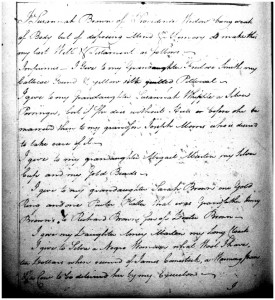
Recently, I had a client who wanted to know more about a silver teapot designed by the Hurd silversmiths of Boston that had been passed down through his family. The teapot had the name “Sally Brown” engraved on it, but to his knowledge, he did not have any Brown relatives, which made the teapot a bit of a mystery.
With some research, we found a connection to the Brown family through ancestor Amey Martin (1784–1852), the wife of Samuel Nightingale Richmond; her parents were Silvanus Martin (1748–1819) and Amey Brown (1749–1833) of Providence, Rhode Island. Though I located a connection to a Brown family, my client’s direct ancestry did not contain anyone named Sarah or Sally Brown. Continue reading Keeping it in the family
Blending a family
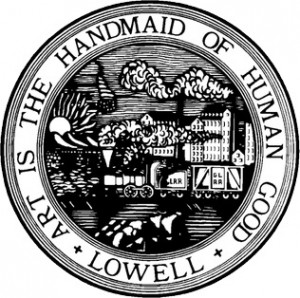 Mine is a typical American family, and I am a typical genealogist. My family is an assortment of divorced households and second marriages and I, the ever diligent genealogist, have labored to research all of the family lines, even if they are not my own, because even when I don’t share their DNA, they are my family.
Mine is a typical American family, and I am a typical genealogist. My family is an assortment of divorced households and second marriages and I, the ever diligent genealogist, have labored to research all of the family lines, even if they are not my own, because even when I don’t share their DNA, they are my family.
Like members of my immediate family, my blended family can be uninterested in the details of their own genealogy. Don’t get me wrong: they like the highlights (your great-grandparents were from County Cork or your ancestors were Loyalists who moved to Quebec), but not the mundane. Continue reading Blending a family